Romance Novels, The Last Great Bastion Of Underground Writing
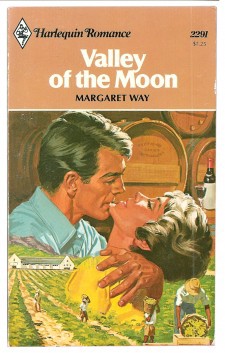
Romance fiction is widely reckoned to be a very low form of literature. Maybe the lowest, if we’re not counting the writing at Groupon, or on Splenda packets. Romance fiction: probably the worst! An addictive, absurd, unintellectual literature, literature for nonreaders, literature for stupid people — literature for women! Books Just For Her!
Low or not, romance is by far the most popular and lucrative genre in American publishing, with over $1.35 billion in revenues estimated in 2010. That is a little less than twice the size of the mystery genre, almost exactly twice that of science fiction/fantasy, and nearly three times the size of the market for classic/literary fiction, according to Simba Information data published at the Romance Writers of America website.
It would be crazy to fail to pay close attention when that many people are devoted to something.
So, what is in all these hundreds of millions of books? What is their strange allure? As it happens I am in a position to say, because I read and love romance fiction. It’s one of the genre things I collect sporadically; I have a particular fetish for Mills & Boon and Harlequin romances of the period between the late 1930s and 1980, what I think of as their Golden Age. During this time, the two houses produced an immense and vastly entertaining body of writing with a unique function and value in American life. Or Anglophone life, to be more exact, since Mills & Boon was founded in London (Whitcomb Street, W.1.) in 1908. Harlequin, which came much later, is a Canadian firm.
Romance novels are feminist documents. They’re written almost exclusively by women, for women, and are concerned with women: their relations in family, love and marriage, their place in society and the world, and their dreams for the future. Romances of the Golden Age are rife with the sociopolitical limitations of their period, it must be said. They’re exclusively hetero, and exclusively white, for example. Even so, they can be strangely sublime.
Simone de Beauvoir wrote in The Second Sex (1949) “[Woman] is defined and differentiated with reference to man and not he with reference to her; she is the incidental, the inessential as opposed to the essential. He is the Subject, he is the Absolute — she is the Other.”
In romance fiction this formula is reversed, as scholar and former Mills & Boon editor jay Dixon (who spells her name with a lower-case “j”) observes in her book The Romantic Fiction of Mills & Boon 1909–1995. Woman is the Subject, man the Other. (This is a marvelous book, by the bye, far and away the best one on the subject; thorough, scholarly, fun and beautifully reasoned.)
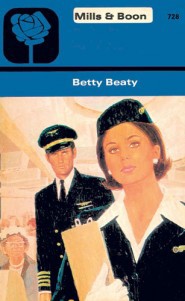
For all the scoffing from various quarters at the fairy-tale messages they contain, romances largely deal with practical, everyday matters; they’re more like field guides for resolving the real-life difficulties women face. As those difficulties have changed over time, the romance novel has adjusted accordingly. The problems of balancing a career with running a household, looking after children, negotiating a romantic impasse: these kinds of things are dealt with directly. Rarely do “serious” writers on women’s issues stoop so low as to address such homely questions, agonizing though they remain to women even now. How do we express generosity, love and patience without becoming a doormat? Yes I want to have a career, but I still like jewelry and pretty dresses! How can this incredible man like me even a little bit, when I have all these flaws? What kind of person does one need to be in order to really deserve someone’s love? These questions have never stopped being asked, no matter how emancipated we may become.
Every Mills & Boon romance is guided by the light of a single principle; the philosophical pole star that emerged with the birth of the novel in our language from 1740–65, in the works of Richardson, Fielding, Fanny Burney et al. In The Romance Fiction of Mills & Boon, Dixon writes: “The underlying philosophy of the novels of Mills & Boon is that love is omnipotent — it is the point of life. It is the solution to all problems, and it is peculiarly feminine. Men have to be taught how to love; women are born with the innate ability to love.”
Whether or not this is actually true, I don’t know, so I can’t tell you. But can there be any doubt that this single conviction has fueled the efforts of a vast proportion of novelists, male or female, ever since the invention of novelists?
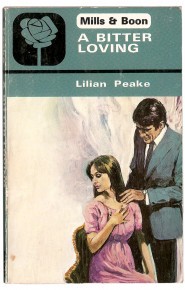
Dixon makes a persuasive case that the romance heroine draws her man into the domestic sphere, the realm of women, of home, in order to resolve their differences and establish sex with love as the central principle in their lives. Actually, both lovers must alter their earlier prejudices to create a working alliance where sexualized love can flourish, cf. the grandmamma of all romance novels, Pride and Prejudice.
Men must be transformed by love and enter into the woman’s realm in order to emerge as fully-realized human beings: this is the core message of romance fiction, Dixon argues. We need one another; embrace this idea, and everything will magically work out.
The part about it all working out provides the fairy-tale gloss of these stories. For we all know that even with all the understanding in the world, and all the best intentions, it might not. Still, however foolish it may seem to the modern, knowing, cynical reader, many find it very pleasant to withdraw into a fantasy place where everything comes right in the end. “The good ended happily, and the bad unhappily,” as in Wilde’s fizzy, bitter joke: “That is what Fiction means.”
In any case, whatever her merits, Simone de Beauvoir will be no help to you at all when your boyfriend has been unkind to you, but a romance novel might well help. (Considering the unbelievable perfidies of her own boyfriend, Jean-Paul Sartre, one may hope that Simone de B. resorted to Mills & Boon now and then, when the need arose. Or Françoise Sagan, at the very least.)
***
Romance literature is underground writing, almost never reviewed or discussed in the newspapers or literary rags, or at a dinner party. One is supposed to be embarrassed to have a taste for it.
There are distinct advantages in this poor-cousin status. Here is a literature entirely without pretense; its authors are guileless, since they needn’t conform to any external ideal of literary performance. They are in no way trying to win a Booker Prize. Consequently they are entirely at liberty to explore their own questions within the few confines of their genre.
So there’s no sniffy condescension or po-mo posturing in a romance novel; they’re the least stuck-up books in the world. Everybody knows that they are written and read just for kicks, and that gives the author an enviable freedom within which she may permit her imagination to run riot. And does it ever. These writers have no authorial brakes at all, and their irrepressibility is enchanting all by itself. What other kind of author is free to name her hero Sin Watermount or Don Julio Valdares, Tarquin Roscuro or Duc Breul de Polain et Bouvais? There is generally a wild, far-flung and exotic locale: Queensland, the Western Cape of South Africa, the Scottish Highlands. There are impossible situations, natural disasters, a whole pantheon of dei ex machinis, drama galore.
And there is, always, falling in love. I have often wondered whether romance novels mightn’t generally serve the same purpose for women that pornography does for so many men. I do not mean as an aid to autoeroticism, though, so much as the imaginary fulfillment of a profound imperative that is never too far from your mind.
Anyway, pleasurable as all that is, romance fiction’s deeper purpose is twofold. First, there is the soothing, gentle balm they apply to the insecure and frightened part of our nature. These are books with the set purpose of providing healing and reassurance to the reader.
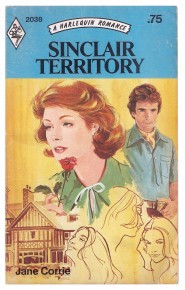
The romance heroine, though possessed of heart, intelligence and beauty, is at the mercy of her own self-criticism most of the time. As the story begins, she is scared and isolated, poor, or abandoned, or lonely. Not infrequently, the book opens with her having just suffered some terrible loss; her husband has just died in a plane crash, or her parents or beloved guardians have died, and now she is forced to work as a paid companion to a rich and disagreeable widow, maybe, or she’s just come to Australia from England to live with her grandfather, who is mean as a snake. Then she runs into an unusual and interesting man who openly demonstrates his dislike for her, or else pretty much ignores her entirely.
Difficulties will multiply. And almost always, as the tension builds, the heroine is beset with doubts about her own competence, attractiveness and worth.
That’s just how I feel! the reader cries inwardly.
This goes wrong, that goes wrong. I am the worst, most worthless person, the heroine is saying to herself half the time, thereby calling forth the reader’s protective, sisterly feelings. Both reader and heroine have a good cry, maybe. Then the heroine redoubles her efforts to do all the things she needs to do. Find a job, grow up and stand on her own two feet, care for a child, nurse someone she loves back to health.
Since she is convinced that she totally sucks in every way, the heroine will also be mostly oblivious to the hero’s growing attraction to her. All of a sudden, though, beside himself with desire, he will pounce, just a bit; sometimes with the “punishing kiss” and sometimes with gentleness. But there will be a thrilling undercurrent of barely-restrained passion; he might “mutter a curse under his breath.” Bit by bit, the difficulties are negotiated, the rival leaves town, the farm is saved. Our hero and heroine arrive at an understanding, and the end of the book finds them, almost always, in a passionate embrace.
The pleasure of moving through this ritual of set plot points will be familiar to lovers of detective fiction or spy novels. I use “ritual” advisedly because it really is quite like a religious ceremony; comforting, calming. The pleasure involved is almost wholly anticipatory, and if you don’t know almost exactly what is going to happen, you can’t feel the pleasure of anticipation. The literary rituals of genre fiction fulfill their purpose by pushing the buttons in your mind and heart, one by one.
***
The second purpose of romance novels is the exercise of imagination. This may sound paradoxical, given that there is a definite formula to these stories. But they are indeed vehicles for the imagination; each one a love rollercoaster, if you like, to tempt our fantasies. To idealize. What would a really wonderful man be like? What are the very best characteristics that men and women can have? What would the most exciting possible moment in a love affair be like; how would the tenderest lover behave?
So at the same time that these books are about real issues, they are profoundly unreal and fairy-tale-like. The same thing being true of fairy-tales: serious business in a frothy, thrilling exterior. As a reader, this part appeals to me the most: the opportunity to vamoose into a purely escapist story, which I guess also explains my love for detective novels, fantasy, and sci-fi whether hard or soft.
Dixon quotes Mills & Boon author Violet Winspear as having said in Radio Times, “I think all women like to dream about marvelous men,” adding “ I’ve never met any of them myself, I doubt if anybody has.”
***
So what is it, exactly, that makes literature trivial? Is the point of literature to depict something more like “real life”? If the formulaic qualities and perfervid fantasy of romance novels bring them closer to superhero comics than to Dostoevsky, what does this mean, exactly? What is the difference between genre and “serious” fiction, now that Maus and The Left Hand of Darkness and The Man in the High Castle have conclusively demonstrated that deeply serious, insightful ideas may indeed come in a deceptively lightweight envelope?
The key difference between Fyodor Dostoevsky and Violet Winspear is — the beard, obviously, but in terms of literary production, the difference is that the latter is thinking more about you, the reader, whereas the former is thinking more about himself, the author. Each approach has an enormous value, potentially. To put this another way, Dostoevsky writes from deep inside himself, about his whole life, every single thing he ever saw or learned; Winspear plies her craft according to what she imagines it would please you to read, imagine or dream about, though it’s nearly impossible for a novelist to avoid revealing some of his own ideas and beliefs about the world, however tangentially.
It doesn’t matter whether you call this “serious” literature or not, really, though it seems to me that when millions and millions of people are involved in the same reading, it is very serious indeed.
***
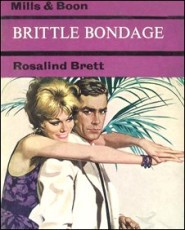
“Can I make him happy, Contessa?” “You love him for himself… [And] I believe your mutual interest in Persian rugs will be a strong bond between you.”
— Anne Weale, Now or Never (1978)
You can tell a Golden Age romance very easily by the weird beauty of its cover art and typography. They are irresistible. Oddly, the covers I prefer also contain the stories I prefer: a little old-fashioned, and crazy as hell, glittering with imagination and lunacy. They are free of the ploddingly explicit sexual detail of today’s romance, or the outright depravity of earlier ones like The Sultan’s Slave or The Fruit of Eden.
“Serious” or literary fiction is supposed to be that way because it’s meant to be like Dostoevsky, leaving no stone unturned in the human psyche, shocking us, showing us things we’d never understood or even thought about ourselves before. There’s not much room for fun in books like those.
But surely it’s not necessary to point out that the rarefied world of American literary fiction is brimming with dull, predictable and zero-ly engaging books. Most “literary” novels, in fact, take not one single risk, offend no taboo, and leave every sacred cow grazing undisturbed in the placid fields of their conventionality. Which is the riskier, edgier, more involving story? The lit-fic novel du jour — some lukewarm retread of Desperate Characters, probably — or The Sheik (1919), E.M. Hull’s febrile, terrifying account of the abduction, rape and eventual “taming” of a tomboy Englishwoman by handsome, cruel tough guy Sheikh Ahmed Ben Hassan? The recent reading of which made me realize that we only think we don’t have taboos.
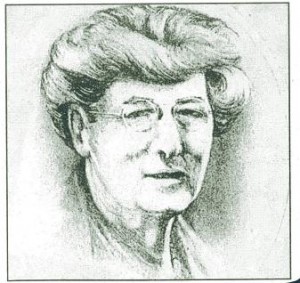
This brutal, vulgar and wildly popular book was later made into a film starring Rudolph Valentino, who became a superstar as the result. But no way could The Sheik ever be made into a film today. It is far too depraved. I keep thinking it must be to do with the war. That’s a likeness of its author, Edith Maude Hull, at right, by the way.
Keep that visage in mind as I run you through the plot. First, the Sheik abducts our heroine and takes her back to his desert lair, where he commences to rape her every few pages. She is moderately peeved at him for raping her all the time but still finds him amazingly handsome, though “cruel,” which, pretty much. She finally manages to escape, only to be abducted yet again, but this time by some other lord of the desert. So she is right in the middle of being strangled by this new abductor (she won’t let him rape her) when just in time, the Sheik arrives to reclaim his property, erm, mistress, and after a ghastly struggle slowly chokes that horrible fat old black-toothed Ibraheim Omair to death right in front of her on the divan, in revenge, smiling all the while, “till the dying man’s body arched and writhed in his last agony, till the blood burst from his nose and mouth, pouring over the hands that held him like a vice.” Oh and the Sheik turns out to be not even an Arab, but the son of a mean Scottish earl and a Spanish princess instead. She ought to have known! He has “the famous Caryll scowl,” she exclaims, smacking herself on the forehead. (Okay, she doesn’t smack herself on the forehead. Also, English people can’t spell.)
Anyway, believe it or not, she stays with him because now they’re “in love” in her Stockholm Syndrome-induced crazytown in the desert forever.
I don’t know. Usually, I just prefer my escapist fiction a little less terrifying and horrible. There can be a little bit of abduction! But not too much.
***
In the middle of writing this, I was overjoyed to learn, reading here, that Awl commenter mascarasnake was in possession of information regarding that rarest of aves, a grandfather who read romance fiction for pleasure:
[M]y teetotal, suit-wearing farmer Grandfather always had to hand […] Silvermints and what we referred to as his ‘dirty books”. They were Mills and Boon (Harlequin in the US, I think?) and a source of complete fascination to me. Looking back it seems bizarre that the only things he read were church newsletters and books about eighties careerwomens’ love lives.
Straightaway I wrote and asked her about it, and in response to my questions, which amounted to PLEASE TELL ME EVERYTHING, she kindly replied:
My grandfather was born in 1909, to a typically large Catholic family […] Most of his brothers went to America but he remained on the farm he grew up on. He married my Grandmother when he was in his thirties and she was in her twenties. They lived and worked together on a small farm in the West of Ireland, with not particularly good land, and had eight children. They grew their own food, had eggs from their own chickens and milk from their cows, but things like store-bought food and new clothes would have been a rarity even when my mother was growing up in the sixties. […]
As a child I didn’t think my Grandad’s choice of reading material was anything unusual, I just assumed that Mills & Boon were what all grandparents read. I’m not sure who gave them to him initially; it was most likely my Granny or one of their four daughters. The nearest village has a church, a few pubs and a small store so most of his books were bought for him by his children. My mother and I often bought a stack in a secondhand bookstore before we went to visit for the weekend in the eighties. His chair in the kitchen was in front of a window and there were always a few books stacked on the sill, waiting to be read. My mother told me that, as the plots were so similar, my grandparents developed a system to keep track of which books they’d already read by putting their initial inside the cover once they finished. They both admitted that if they didn’t do this it would take a while to realize they were rereading. […]
I’m not sure that he was a particularly romantic husband; it definitely wasn’t a roses and moonlight stroll kind of relationship. He was a good husband and father and I think they were happy together, but it was a different era and I don’t think romance was the main objective when they married.
I wonder.
In learning about the very few men who read these books (some 9 percent, according to the RWA website, but I’ve never met even one, myself) it struck me how women are far more free to read anything they like than are men, just as we are so much more free than men to wear any clothes we like. Nobody is going to bother a woman about her reading, whereas American men are only just barely permitted to admit to having a taste for Jane Austen. Even then, they are liable to blame this girly transgression on a sentimental high-school teacher.

There are quite a lot of questions on Yahoo! Answers asking whether or not it’s okay for a guy to read romance novels. And pretty much everyone answers Yes, read what you like, it is okay, though one pointed out that he might like to read them in private.
In our world, very little provision made for men to feel or express tenderness openly. And yet one can’t help but suspect that nearly everyone has his gentle, unwarlike side. It’s this, I suspect, that that those young men who are devoted to the animated TV show “My Little Pony,” and who are known as Bronies, are looking for, at least in part: a place where they might not only free themselves of the imperatives of machismo, but also manifest their gentleness freely and without restraint, be playful, permit themselves to imagine freely.
When we really become equal, maybe “just for women” won’t be seen as less, or weird, or lame, as it appears mascarasnake’s grandfather already understood. Women visit the country of “just for men” all the time, unimpeded; we can read Tom Clancy or Patrick O’Brian and nobody bats an eyelash, because we are allowed to be curious about men’s fantasies of things. We have a visa for their country, and yet they are not permitted into ours, in some sense. The world of letters being the paradise of liberty that it is, it is perfectly fine for anyone to stick to just one kind of book, or just one authorial gender, or one genre, or one color of binding, just as he likes. But if men are curious about our side of things, as I imagine many of them must be, I should think it would be interesting to them to visit, and maybe we should invite them, as I am doing now.
***
Among its hundreds and hundreds of writers madly scribbling all over the globe, Mills & Boon employs just one male writer, Roger Sanderson. “The broad-shouldered Yorkshireman goes weight training three times a week, mountain climbing at the weekends and enjoys a drink with friends at his rugby club in Waterloo, Merseyside,” the BBC reports. He writes under his wife’s name, Gill Sanderson; they have four sons. “Gill” Sanderson has written more than 80 romances. He would probably have been a soldier otherwise, he says.
The encyclopedic jay Dixon says that the manuscripts submitted by men to Mills & Boon usually contain obvious howlers that no woman would ever write, such as having the heroine explicitly admiring herself in a mirror. (Definitely a male author’s tic in imagining what being a woman is like, I’ve noticed it before; they had it in that movie Switched, for example.) But she adds: “I can find nothing in Roger’s romances that would alert even an experienced reader to the fact that he is a man… Roger is one of the few men who does have the knack.”
“I’m happily married and I have been in love, therefore I have the basic qualification,” Sanderson told the BBC, adorably. “I know what it feels like and from there everything will develop.”
***
Among the many unexpected gifts of the e-reader, anonymity is one of the most valuable. Romance is one of the fastest-growing categories in ebooks, in a maybe-related development.
As Alison Flood wrote recently in the Guardian, “No longer are [readers] forced to conceal the covers of their latest purchases (The Sultan’s Choice, say, or The Temp and the Tycoon) from fellow commuters. Instead, they can follow their heroine’s romantic adventures with impunity, safely protected by the anonymity of their e-readers.”
Maybe the opening of this new door can help in developing a better understanding between men and women. To be free to see how the other half lives. And beyond that, to a greater understanding of literary activity itself, which is only a matter of someone else’s ideas, someone’s awareness of life, made manifest for others — for anyone else at all — to experience and enjoy.
Related: The Golden Age Of Dirty Talk
Maria Bustillos is the author of Dorkismo and Act Like a Gentleman, Think Like a Woman.
